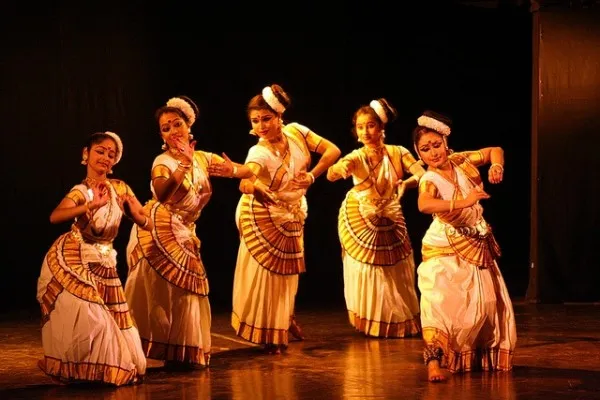Mohiniyattam, often referred to as the “Dance of the Enchantress,” is a classical Indian dance form that hails from the southern state of Kerala. Steeped in rich mythology, history, and tradition, this graceful and captivating dance style has entranced audiences for centuries with its exquisite movements, expressive storytelling, and mesmerizing costumes.
The Origins of Mohiniyattam
The roots of Mohiniyattam can be traced back to the devadasi tradition of temple dance in southern India. It is believed to have evolved from the more ancient dance form known as Dasiyattam, which was performed by the female temple dancers or devadasis. Over time, Mohiniyattam emerged as a refined and sophisticated dance style characterized by its subtle, sensuous movements and emotive storytelling.
The name “Mohiniyattam” itself carries a mythological significance. It is derived from two Sanskrit words: “Mohini,” which means a seductress or enchantress, and “attam,” which means dance. According to Hindu mythology, Mohini is an incarnation of Lord Vishnu, who used her enchanting dance to distract and defeat the demon Bhasmasura. This mythological connection adds a layer of mystique to the dance form, as Mohiniyattam dancers strive to embody the alluring grace and charm of Mohini herself.
Distinctive Features of Mohiniyattam
- Lasya and Tandava: Mohiniyattam is often described as the dance of “Lasya,” which represents the feminine, graceful, and sensuous aspects of dance. The movements in Mohiniyattam are characterized by gentle swaying, fluidity, and softness, emphasizing the beauty and elegance of the female form. This is in contrast to the more vigorous and dynamic “Tandava” style found in other classical Indian dance forms.
- Costume and Makeup: One of the most visually striking aspects of Mohiniyattam is the elaborate costume and makeup worn by the dancers. Dancers wear white off-white or cream-colored sarees with intricate gold borders, known as “kasavu sarees.” The makeup accentuates the eyes with heavy kohl and bright red lips, enhancing the facial expressions that are integral to the storytelling.
- Jewelry and Ornaments: Mohiniyattam dancers adorn themselves with an array of traditional jewelry, including heavy necklaces, earrings, bangles, and anklets. These ornaments not only add to the visual appeal but also enhance the sound of the footwork, creating a rhythmic and melodious accompaniment to the dance.
- Expressive Abhinaya: Mohiniyattam places a strong emphasis on “Abhinaya,” the art of storytelling through facial expressions, hand gestures, and body movements. Dancers use their eyes, eyebrows, and hand gestures (known as “Mudras”) to convey intricate emotions and narratives, making the dance form deeply expressive and communicative.

Enduring Legacy and Modern Revival
Throughout its history, Mohiniyattam has faced periods of decline and resurgence. In the early 20th century, dedicated artists and scholars worked tirelessly to revive and promote this enchanting dance form. Today, it enjoys a global presence, with artists and institutions worldwide dedicated to its preservation and promotion.
Mohiniyattam has also evolved to incorporate contemporary themes while staying true to its classical roots. Dancers now explore a wide range of topics in their performances, from traditional mythological tales to contemporary social issues, thereby ensuring its relevance in modern times.
Mohiniyattam, with its mesmerizing grace and enchanting storytelling, continues to be a source of fascination and admiration for audiences around the world. Its rich history, distinctive features, and enduring legacy make it a precious gem in the treasure trove of Indian classical arts. As it continues to evolve and adapt to the changing times, Mohiniyattam remains a testament to the enduring power of dance to captivate, inspire, and enchant.


